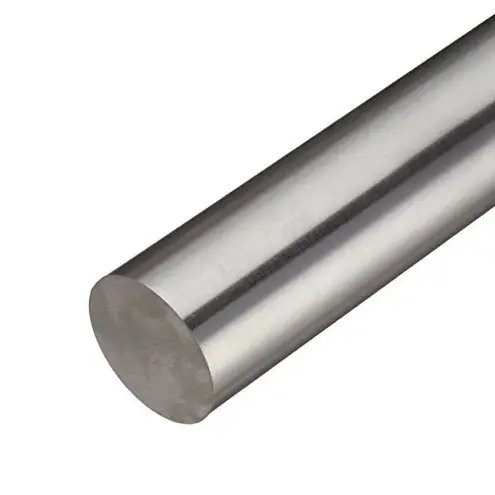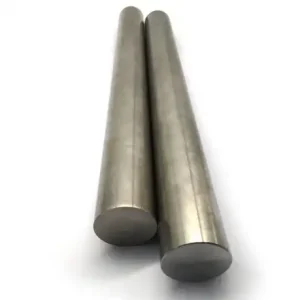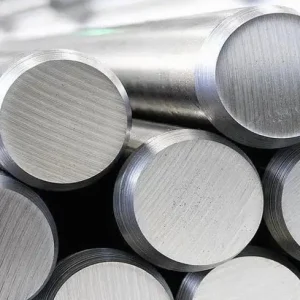ASTM A582 Type 416 bars represent one of the most versatile martensitic stainless steel solutions in modern manufacturing. At MWalloys, we recognize these bars as essential components for precision machining applications, offering superior machinability combined with excellent corrosion resistance and mechanical strength. After decades of working with various stainless steel grades, we can confidently state that Type 416 bars provide an optimal balance of performance characteristics that make them indispensable across aerospace, medical device, and precision instrumentation industries.
What is ASTM A582 Type 416 Bars?
ASTM A582 Type 416 bars are precision-manufactured martensitic stainless steel products designed specifically for applications requiring exceptional machinability. These bars conform to the rigorous standards set forth by the American Society for Testing and Materials, ensuring consistent quality and performance across all manufacturing batches.
Type 416 represents a free-machining variant of the classic 410 stainless steel, enhanced with sulfur additions that significantly improve chip formation during machining operations. We manufacture these bars through controlled hot working processes, followed by annealing treatments that optimize their microstructure for subsequent machining operations.
The martensitic crystal structure of Type 416 develops through carefully controlled heat treatment cycles, resulting in a material that combines the corrosion resistance inherent in stainless steels with the mechanical properties required for structural applications. Our manufacturing process ensures that each bar meets the precise dimensional tolerances and surface finish requirements specified in ASTM A582.
What is the Chemical Composition of ASTM A582 Type 416 Bars?
The chemical composition of ASTM A582 Type 416 bars follows strict specifications that ensure optimal performance characteristics. Understanding these elemental percentages helps engineers select appropriate materials for specific applications.
| Element | Minimum % | Maximum % | Purpose |
|---|---|---|---|
| Carbon (C) | 0.08 | 0.15 | Hardenability and strength |
| Manganese (Mn) | - | 1.25 | Deoxidation and hot working |
| Phosphorus (P) | - | 0.06 | Residual element control |
| Sulfur (S) | 0.15 | 0.35 | Machinability enhancement |
| Silicon (Si) | - | 1.00 | Deoxidation agent |
| Chromium (Cr) | 12.00 | 14.00 | Corrosion resistance |
| Molybdenum (Mo) | 0.60 | - | Enhanced corrosion resistance |
| Selenium (Se) | 0.15 | - | Alternative to sulfur |
The controlled sulfur content represents the key differentiator in Type 416 composition. This element forms manganese sulfide inclusions that act as chip breakers during machining, dramatically reducing cutting forces and extending tool life. We carefully balance this addition to maintain corrosion resistance while achieving superior machinability.
Chromium content provides the fundamental corrosion resistance characteristics, while molybdenum additions enhance performance in chloride environments. The carbon range allows for adequate hardenability while maintaining weldability within acceptable limits.
What are the Mechanical Properties of ASTM A582 Type 416 Bars?
The mechanical properties of ASTM A582 Type 416 bars vary depending on heat treatment condition and bar diameter. These properties make them suitable for demanding structural and precision component applications.
| Property | Annealed Condition | Hardened & Tempered |
|---|---|---|
| Tensile Strength (MPa) | 515-620 | 724-1034 |
| Yield Strength (MPa) | 275-415 | 517-862 |
| Elongation (%) | 20-25 | 12-18 |
| Reduction of Area (%) | 50-60 | 35-45 |
| Hardness (HRC) | 20-25 | 28-40 |
| Impact Strength (J) | 68-95 | 27-41 |
| Modulus of Elasticity (GPa) | 200 | 200 |
We conduct rigorous testing on every production batch to verify these mechanical properties. The annealed condition provides optimal machinability, while heat treatment can significantly enhance strength characteristics for structural applications.
Temperature effects play a crucial role in mechanical performance. At elevated temperatures, Type 416 maintains reasonable strength up to approximately 400°C, beyond which rapid strength degradation occurs. This temperature limitation must be considered in application design.
What is the Specification of ASTM A582 Type 416 Bars?
ASTM A582 establishes comprehensive specifications covering dimensional tolerances, surface conditions, and testing requirements for Type 416 bars. These specifications ensure consistent quality across all suppliers and production facilities.
| Specification Category | Requirement | Standard Reference |
|---|---|---|
| Dimensional Tolerance | ±0.005" to ±0.030" | ASTM A582 Table 2 |
| Surface Finish | 125 μin Ra maximum | ASTM A582 Section 7 |
| Straightness | 0.005" per foot | ASTM A582 Section 8 |
| Chemical Composition | Per heat analysis | ASTM A582 Table 1 |
| Mechanical Properties | Tensile test required | ASTM A582 Section 9 |
| Ultrasonic Testing | Optional requirement | ASTM A582 Section 10 |
| Magnetic Particle Test | When specified | ASTM A582 Section 11 |
The specification includes provisions for various finishing operations, including centerless grinding, turning, and polishing. We maintain strict adherence to these requirements through comprehensive quality management systems that track every production parameter.
Heat treatment specifications within ASTM A582 provide guidance for achieving optimal mechanical properties. The standard recognizes that different applications may require varying property combinations, allowing for customized heat treatment cycles.
What is 416 Stainless Steel Standard?
Type 416 stainless steel operates under multiple international standards that ensure global compatibility and consistent performance characteristics. These standards facilitate international trade and provide common reference points for engineers worldwide.
The primary standards governing Type 416 include ASTM A276 for general bar products, ASTM A582 for precision bars, and various international equivalents. Each standard addresses specific aspects of composition, properties, and manufacturing requirements.
ASTM standards represent the most widely recognized specifications in North America, while ISO standards provide global harmonization. We maintain certification to multiple standards, allowing us to serve diverse international markets with consistent product quality.
European standards such as EN 1.4005 provide equivalent specifications with minor variations in compositional ranges. These differences reflect regional preferences and manufacturing practices but result in essentially equivalent performance characteristics.
What is the Equivalent of 416 Stainless Steel?
International equivalents of Type 416 stainless steel provide options for global sourcing and standardization across multinational operations. Understanding these equivalencies helps engineers specify materials consistently regardless of geographic location.
Major international equivalents include EN 1.4005 (European), SUS 416 (Japanese), and various other national designations. While compositional ranges may vary slightly, these grades provide essentially equivalent performance characteristics.
Regional variations often reflect local raw material availability and manufacturing preferences. However, modern international trade has largely standardized these compositions to ensure global compatibility.
We maintain extensive cross-reference databases that facilitate material selection across different international standards. This capability proves essential for multinational projects requiring consistent material properties.
What is the Difference Between 416 and 316L?
The fundamental differences between Type 416 and 316L stainless steels reflect their distinct metallurgical structures and intended applications. Understanding these differences helps engineers select appropriate materials for specific service conditions.
| Characteristic | Type 416 | Type 316L |
|---|---|---|
| Crystal Structure | Martensitic | Austenitic |
| Magnetic Properties | Magnetic | Non-magnetic |
| Corrosion Resistance | Good | Excellent |
| Machinability | Excellent | Fair |
| Weldability | Limited | Excellent |
| Heat Treatment | Hardenable | Non-hardenable |
| Temperature Range | -20°C to 400°C | -196°C to 800°C |
| Chloride Resistance | Fair | Good |
Type 416 offers superior machinability due to sulfur additions, while 316L provides enhanced corrosion resistance through molybdenum content and austenitic structure. Application requirements typically determine the optimal choice between these grades.
Cost considerations often favor Type 416 for applications where machining represents a significant portion of manufacturing costs. The reduced machining time and extended tool life can offset higher material costs in many applications.
What is a ASTM A582 Type 416 Bar Used For?
ASTM A582 Type 416 bars find extensive application across industries requiring precision machined components with moderate corrosion resistance. Our experience shows these bars excel in applications where machining efficiency directly impacts production economics.
Aerospace applications include precision fasteners, valve components, and instrumentation parts where dimensional accuracy and surface finish are critical. The excellent machinability allows for complex geometries while maintaining tight tolerances.
Medical device manufacturing represents another major application area. Type 416 bars are commonly used for surgical instruments, dental tools, and implantable components where biocompatibility and precision machining are essential.
Automotive applications include fuel system components, precision shafts, and valve train parts. The combination of corrosion resistance and machinability makes Type 416 ideal for these demanding applications.
Food processing equipment utilizes Type 416 bars for components requiring frequent cleaning and sanitization. The stainless steel composition provides adequate corrosion resistance while enabling efficient manufacturing.
What is the Classification of ASTM A582 Type 416 Bars?
The classification system for ASTM A582 Type 416 bars encompasses multiple organizational frameworks that help engineers specify appropriate materials for specific applications.
| Classification System | Category | Designation |
|---|---|---|
| UNS Number | Stainless Steel | S41600 |
| AISI Designation | Martensitic | 416 |
| Metallurgical Type | Crystal Structure | Martensitic |
| Corrosion Category | Resistance Level | Moderate |
| Machinability Rating | Relative Scale | Excellent (85-90) |
| Magnetic Properties | Response | Ferromagnetic |
| Heat Treatment | Capability | Hardenable |
The UNS (Unified Numbering System) designation S41600 provides unambiguous identification for procurement and quality control purposes. This system eliminates confusion that can arise from multiple trade names or regional designations.
Metallurgical classification as martensitic stainless steel indicates the fundamental crystal structure and associated properties. This classification helps predict behavior under various service conditions and heat treatment responses.
Is 416 SS Better Than 316 SS?
The comparison between Type 416 and 316 stainless steels depends entirely on specific application requirements rather than absolute superiority of either grade. Our engineering experience shows that each grade excels in particular service conditions.
Type 416 demonstrates clear advantages in applications requiring extensive machining operations. The dramatically reduced machining time and extended tool life can result in significant cost savings for complex components. Additionally, the magnetic properties of Type 416 can be advantageous in certain applications.
Type 316 offers superior corrosion resistance, particularly in marine environments and chemical processing applications. The austenitic structure provides excellent low-temperature toughness and weldability, making it preferred for structural applications.
Temperature considerations often determine material selection. Type 316 maintains properties across much wider temperature ranges, while Type 416 performs optimally within more limited temperature bounds.
Cost analysis must include total manufacturing costs rather than just material prices. Type 416 often provides lower total costs for machined components despite potentially higher material costs.
ASTM A582 Type 416 Bars Global Market Price 2025
Global pricing for ASTM A582 Type 416 bars reflects regional market conditions, raw material costs, and manufacturing capacity. These prices fluctuate based on nickel, chromium, and molybdenum commodity prices.
| Region | Price Range (USD/kg) | Market Factors |
|---|---|---|
| North America | $8.50 - $12.00 | High manufacturing costs |
| European Union | $9.00 - $13.50 | Environmental regulations |
| Asia Pacific | $7.00 - $10.50 | Lower labor costs |
| Middle East | $8.00 - $11.00 | Transportation costs |
| South America | $7.50 - $10.00 | Emerging market dynamics |
| Africa | $8.50 - $12.50 | Import dependency |
Price variations within regions reflect quality levels, certification requirements, and volume discounts. Premium grades with enhanced testing and documentation command higher prices across all markets.
Market trends indicate continued price pressure from increasing raw material costs and environmental compliance requirements. We anticipate moderate price increases throughout 2025 as these factors continue to influence manufacturing costs.
ASTM A582 Type 416 Bars Sizes and Weight Parameters
Standard size ranges for ASTM A582 Type 416 bars accommodate diverse application requirements while maintaining manufacturing efficiency. We stock comprehensive size ranges to meet immediate customer needs.
| Diameter (mm) | Diameter (inches) | Weight (kg/meter) | Standard Length (m) |
|---|---|---|---|
| 6.35 | 0.25 | 0.248 | 3.0-6.0 |
| 9.53 | 0.375 | 0.558 | 3.0-6.0 |
| 12.70 | 0.50 | 0.994 | 3.0-6.0 |
| 19.05 | 0.75 | 2.236 | 3.0-6.0 |
| 25.40 | 1.00 | 3.973 | 3.0-6.0 |
| 31.75 | 1.25 | 6.208 | 3.0-6.0 |
| 38.10 | 1.50 | 8.941 | 3.0-6.0 |
| 50.80 | 2.00 | 15.899 | 3.0-6.0 |
| 63.50 | 2.50 | 24.840 | 3.0-6.0 |
| 76.20 | 3.00 | 35.757 | 3.0-6.0 |
Custom sizes are available for specific applications requiring non-standard dimensions. Our manufacturing capabilities include centerless grinding for precision diameters and specialized lengths for unique applications.
Weight calculations assume standard density of 7.8 g/cm³ for Type 416 stainless steel. Actual weights may vary slightly due to manufacturing tolerances and surface finish requirements.
Advantages of ASTM A582 Type 416 Bars
The unique combination of properties in Type 416 bars provides significant advantages over alternative materials in specific applications. Our customers consistently report improved manufacturing efficiency and reduced production costs.
Superior machinability represents the primary advantage, with cutting speeds up to 300% faster than conventional stainless steels. This translates directly into reduced manufacturing time and lower production costs for complex components.
Excellent surface finish capability eliminates secondary finishing operations in many applications. The fine sulfide inclusions promote clean chip formation and superior surface quality directly from machining operations.
Moderate corrosion resistance provides adequate protection for most indoor applications while maintaining cost-effectiveness. This balance proves ideal for applications not requiring premium corrosion resistance.
Heat treatment capability allows property customization for specific applications. The martensitic structure responds well to various heat treatment cycles, enabling optimization for particular service requirements.
Magnetic properties can be advantageous in applications requiring magnetic response or electromagnetic shielding. This characteristic sets Type 416 apart from austenitic stainless steel alternatives.
Manufacturing Process of ASTM A582 Type 416 Bars
Our manufacturing process for ASTM A582 Type 416 bars follows established procedures that ensure consistent quality and optimal properties. Each production step is carefully controlled to meet stringent specification requirements.
The process begins with electric arc furnace melting using carefully selected raw materials. Precise composition control during melting ensures that sulfur additions are uniformly distributed while maintaining optimal chromium and carbon levels.
Secondary refining through argon oxygen decarburization removes excess carbon and adjusts final composition. This step is critical for achieving the precise chemical balance required for optimal machinability and corrosion resistance.
Hot rolling operations form the basic bar geometry while maintaining proper metallurgical structure. Rolling temperatures and reduction schedules are optimized to prevent segregation and ensure uniform properties throughout the cross-section.
Annealing heat treatment follows hot rolling to optimize microstructure for subsequent machining operations. The controlled heating and cooling cycles promote uniform carbide distribution and stress relief.
Surface conditioning operations remove scale and provide the specified surface finish. These operations may include pickling, grinding, or polishing depending on customer requirements.
Final inspection and testing verify dimensional accuracy, chemical composition, and mechanical properties. Our quality management system ensures that every bar meets or exceeds ASTM A582 requirements before shipment.
Dubai Procurement Case Study
A major aerospace manufacturer in Dubai approached MWalloys for a critical precision component application requiring 2,000 pieces of ASTM A582 Type 416 bars with specific dimensional and surface finish requirements.
The application involved manufacturing precision valve bodies for aircraft hydraulic systems, where dimensional accuracy within ±0.002 inches and surface finish better than 63 μin Ra were mandatory. Traditional machining of standard stainless steels was proving economically unfeasible due to excessive tool wear and machining time.
Our technical team recommended ASTM A582 Type 416 bars in 38mm diameter with centerless ground finish. The superior machinability would reduce machining time by approximately 60% while achieving the required surface finish directly from turning operations.
Implementation involved close collaboration with the customer's production team to optimize cutting parameters and tooling selection. We provided detailed machining recommendations based on our extensive application experience with Type 416 materials.
Results exceeded expectations with machining time reduced from 45 minutes to 18 minutes per component. Tool life increased by 250%, and surface finish consistently met specifications without secondary operations. Total manufacturing cost reduction approached 40% compared to the previous material.
The customer has since standardized on Type 416 for similar applications and expanded usage to other precision components. This success demonstrates the significant economic advantages achievable through proper material selection and technical support.
Frequently Asked Questions
What heat treatment is recommended for ASTM A582 Type 416 bars?
For optimal machinability, Type 416 bars should be used in the annealed condition with hardness between 200-240 HB. If higher strength is required, hardening at 980-1010°C followed by tempering at 200-650°C provides a wide range of property combinations. The specific heat treatment cycle depends on required mechanical properties and service conditions.
Can ASTM A582 Type 416 bars be welded?
Type 416 has limited weldability due to its martensitic structure and sulfur content. Welding requires preheating to 200-300°C and post-weld heat treatment to prevent cracking. For applications requiring extensive welding, we recommend considering Type 410 or austenitic alternatives like 316L.
What is the corrosion resistance of Type 416 compared to other stainless steels?
Type 416 provides moderate corrosion resistance suitable for atmospheric conditions and mild chemical environments. It performs well in indoor applications but may require protective coatings for marine or highly corrosive environments. The corrosion resistance is significantly lower than austenitic grades like 316L but adequate for many precision component applications.
Are there any restrictions on the operating temperature for Type 416 bars?
Type 416 performs optimally between -20°C and 400°C. At temperatures above 400°C, rapid strength degradation and potential oxidation occur. For high-temperature applications above 400°C, we recommend heat-resistant grades such as Type 310 or specialized high-temperature alloys.
What surface finishes are available for ASTM A582 Type 416 bars?
Standard surface finishes include hot rolled (scale removed), cold drawn, centerless ground, and polished conditions. We can provide surface finishes ranging from 250 μin Ra (hot rolled) to 8 μin Ra (precision ground and polished). The specific finish selection depends on application requirements and subsequent machining operations.





